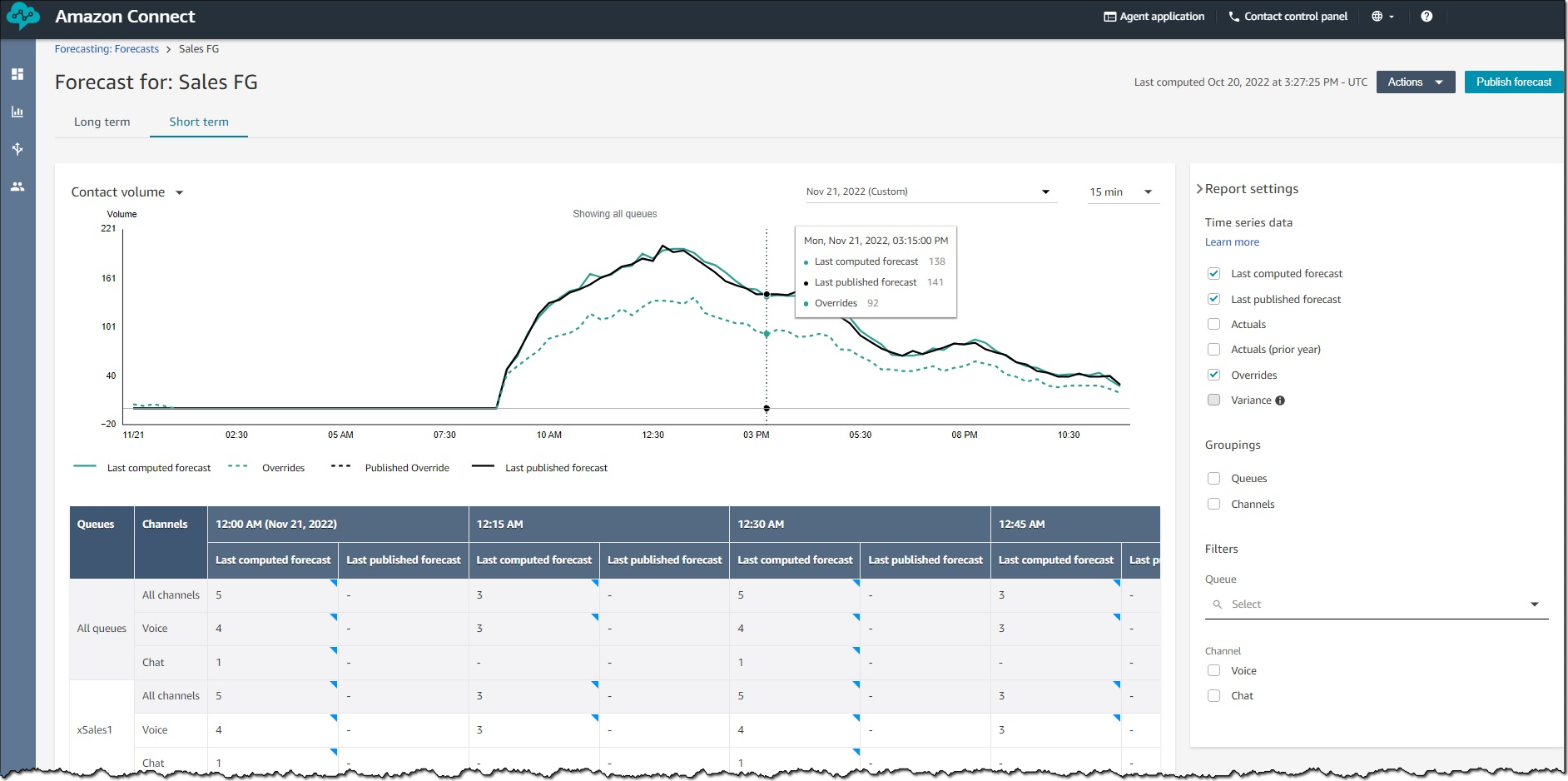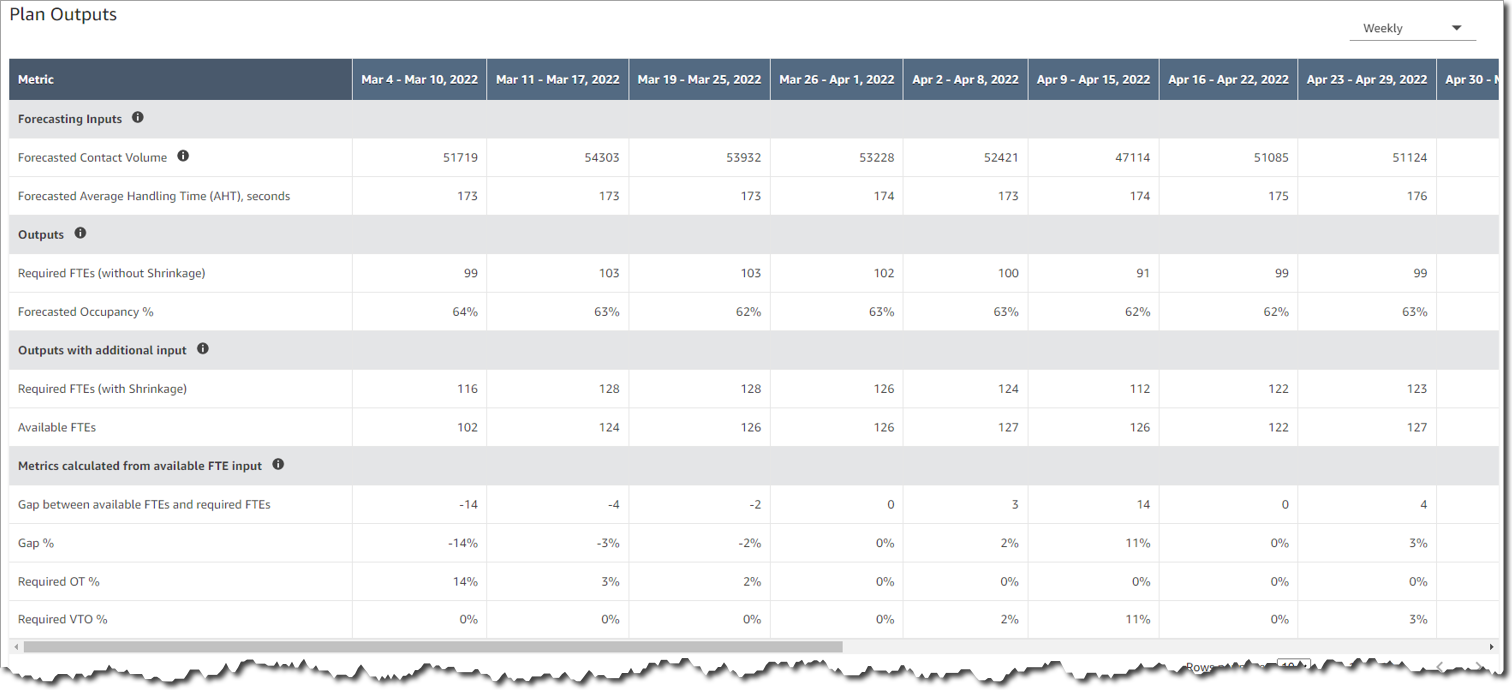
 |
Amazon Connect is an easy-to-use cloud contact center that helps companies of any size deliver superior customer service at a lower cost. If you are following our Amazon Connect announcements, you likely noticed that we keep adding more and more machine learning (ML) powered capabilities to Amazon Connect. ML makes Amazon Connect already smarter at analyzing conversations in real time, finding relevant information needed by contact center agents, and authenticating customers by the sound of their voice.
Today, I’m excited to announce the general availability of new ML-powered capabilities for Amazon Connect:
In addition, I’m happy to announce the preview of the following capabilities:
- Contact Lens for Amazon Connect adds evaluation forms for agent performance, helping managers to create evaluation forms that can be automatically scored by Contact Lens’s ML-powered conversational analytics.
- Amazon Connect agent workspace adds a new step-by-step experience that guides agents to resolve customer issues.
Let’s have a closer look at each of these new Amazon Connect capabilities.
Forecasting, Capacity Planning, and Scheduling
As a contact center manager, you can now predict contact demand with high accuracy, determine ideal staffing levels, and optimize agent schedules to ensure you have the right agent at the right time.
Many of our customers are already using Forecasting, Capacity Planning, and Scheduling. For example, Litigation Practice Group is a provider of legal support for debt relief, bankruptcy, or litigation. Alex Miles, Director of Business Intelligence at the Litigation Practice Group, said:
“One of our biggest challenges with our legacy contact center was forecasting customer demand based on historical data so we could predict surges. When searching for a new provider, Amazon Connect stood out to us because of how easy it is to harness data and leverage machine learning (ML) to deliver highly accurate (>95%) forecasts and optimized schedules. It is simple and flexible to set up and allows us to create agent schedules with high efficiency, even when our agents have many unique schedule requirements. It ensures the right agent is available at the right time to take an end customer’s call. The AWS team works with us closely to solve our business pain points and innovate quickly together. With Amazon Connect forecasting, capacity planning, and scheduling, we are finally confident we can reliably hit our service-level targets and gracefully navigate fluctuations in customer demand.”
To get started, enable Forecasting, Capacity Planning, and Scheduling for your contact center in the Amazon Connect console. Then, you can find the new capabilities in the Amazon Connect Analytics and optimization module.
Forecasting
Now, the first step is to create a forecast of contact demands. Amazon Connect uses an ML model tailored for contact center operations to analyze and predict future contact volume and average handle time based on historical data. The forecasts include inbound, transfer, and callback contacts in both voice and chat channels.

Capacity Planning
Using the published long-term forecasts together with planning scenarios and metrics such as maximum occupancy, daily attrition, and full-time equivalent (FTE) hours per week as the input, you can then use the capacity planning feature to predict how many agents are required to meet your service level target for a certain period of time. It creates a long-term capacity plan that you can share with stakeholders.

Scheduling
Using the short-term published forecasts together with shift profiles, staffing groups, human resources, and business rules, the new scheduling feature creates efficient schedules that are optimized for a service level or an average speed of answer target. Schedulers can review and, if needed, edit the schedules. Once they publish the schedules, Amazon Connect notifies supervisors and agents in the relevant staffing groups that a new schedule is available.
Scheduling now supports intraday agent request management, offering agents overtime or voluntary time off. When things need to change, Amazon Connect makes real-time schedule adjustments with the help of ML, following business and labor rules.

Contact Lens for Amazon Connect adds Conversational Analytics for Chat
Contact Lens conversational analytics capabilities analyze conversations in real time using natural language processing (NLP) and speech-to-text analytics. Today, Contact Lens adds conversational analytics capabilities for Amazon Connect Chat, extending the ML-powered analytics to better assess chat contacts with agents and the Amazon Lex bot. Contact Lens’s conversational analytics for chat helps you understand customer sentiment, redact sensitive customer information, and monitor agent compliance with company guidelines to improve agent performance and customer experience.
You can now use the contact search feature to quickly identify contacts where customers had issues based on specific keywords, customer sentiment score, contact categories, and other chat-specific analytics such as agent response time. Contact Lens now also offers chat summarization, a feature that uses ML to classify and highlight key parts of the customer’s conversation, such as issue, outcome, or action item. You can also use the new analytics capabilities to automatically detect and redact sensitive customer information, such as name, credit card details, and Social Security number, from chat transcripts.

Contact Lens for Amazon Connect adds Evaluation Forms for Agent Performance (Preview)
As a contact center manager, you can now create agent performance evaluation forms in Contact Lens. You can add relevant evaluation criteria, such as the agents’ adherence to required scripts or compliance with sensitive data collection practices. You can also enable scoring that uses the ML-powered Contact Lens for Amazon Connect conversational analytics capabilities.

Some of our customers have already looked into the agent performance evaluation forms in Contact Lens and provided us with feedback—one of them is Frontdoor. Frontdoor provides homeowners with a tech-enabled, people-driven platform for maintaining and repairing major home systems and appliances. Through a network of approximately 17,000 contractor firms, the company responds to more than 4 million service requests annually. Scott Brown, SVP of Customer Experience at Frontdoor, said:
“With millions of phone-based member interactions a year, our team needs a powerful and intuitive QA solution that will support our commitment to provide outstanding experiences at each touchpoint. We have been on Amazon Connect since early 2020 and recently launched Contact Lens. It’s a powerful combination that’s helping us simplify how we work, and its analytics are equipping us to make better-informed decisions and strengthen our agent coaching strategy. The UI is intuitive and easy to use, implementation and ramp-up time was minimal, and feedback from our managers has been very positive. For starters, we were able to reduce the number of evaluation forms needed by 200%, then completed the build-out of them in a third of the time that we anticipated. And, our managers appreciate how easy it is to access conversational insights; things like sentiment, categorization, recordings, hold time, and more are provided side-by-side in the same UI, where evaluation results are prepopulated.”
To join the preview, follow the instructions on Contact Lens for Amazon Connect.
Amazon Connect Agent Workspace adds step-by-step guides (Preview)
The Amazon Connect agent workspace is a single, unified application that provides your agents with the tools needed to resolve customer issues. When accepting calls, chats, or tasks, your agents can view updated customer information, search knowledge articles, and get real-time recommendations.
You can now also use Amazon Connect’s no-code, drag-and-drop interface to create custom workflows and step-by-step guides for your agents. You can specify in your contact flows under which condition a guide is shown to an agent. Once the agent selects the guide, the Amazon Connect agent workspace provides the information and one-click actions across both Amazon Connect and third-party applications that agents can use to resolve the customer issue.

To join the preview, follow the instructions on Amazon Connect Agent Workspace.
Availability and Pricing
Regional availability slightly differs for each of these new Amazon Connect capabilities:
- Forecasting, capacity planning, and scheduling: Available today in US East (N. Virginia), US West (Oregon), Asia Pacific (Sydney), and Europe (London) Regions.
- Contact Lens’s conversational analytics for chat: Available for post-chat use cases today in all the AWS Regions where Contact Lens’s conversational analytics for speech is already available.
- Preview—Contact Lens evaluation forms for agent performance: Available in preview in all the AWS Regions where Contact Lens is already available.
- Preview—Amazon Connect’s step-by-step guides: Available in preview in US East (N. Virginia), US West (Oregon), Asia Pacific (Sydney), and Europe (London) Regions.
With Amazon Connect, you only pay for what you use. There are no required up-front payments, long-term commitments, or minimum monthly fees. The price metrics for these new capabilities are detailed on the Amazon Connect pricing page.
For more details, visit Amazon Connect forecasting, capacity planning, and scheduling, Contact Lens for Amazon Connect, and Amazon Connect Agent Workspace.
Let us know what you think about these new capabilities and how you use them.
And now, go build your contact centers.
— Antje
Originally posted on December 1, 2022 @ 3:38 am

